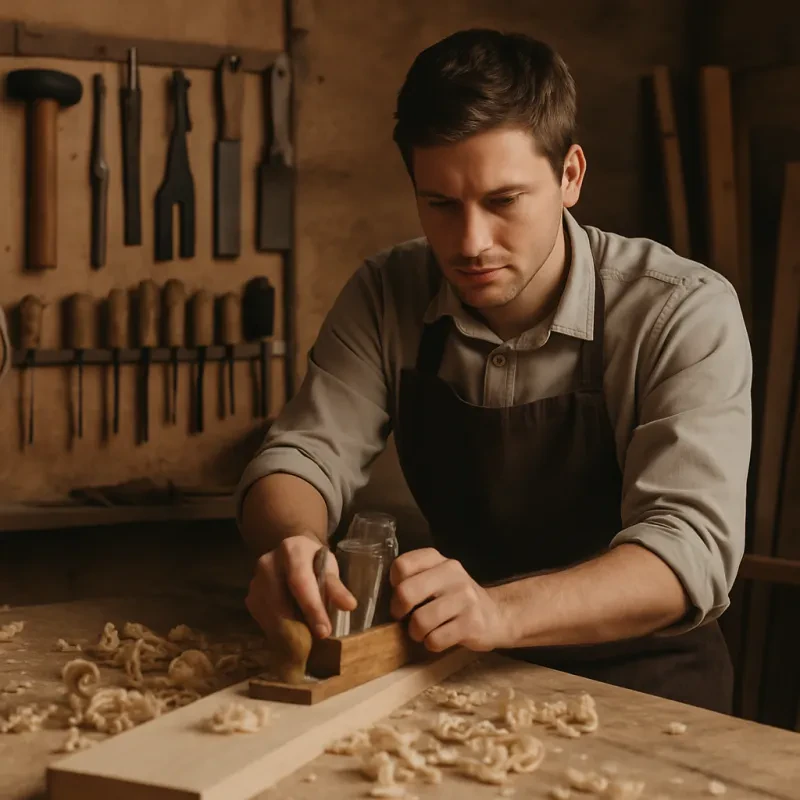Starting your woodworking journey can be super exciting, but it can also feel a bit overwhelming with all the tools out there. To help you get off on the right foot, here are some must-have tools that every new woodworker should consider. These tools will make your projects easier, safer, and more enjoyable!
1. Tape Measure: A reliable tape measure is your best friend in woodworking. Accurate measurements are crucial, so invest in a good quality one. Look for one that's at least 25 feet long—it’ll help you tackle both small and big projects with ease.
2. Square: A framing square or a combination square is essential for making sure your cuts are straight and your joints are square. It’s all about precision in woodworking, and a good square can help you achieve that effortlessly.
3. Saw: Depending on your projects, you might need different types of saws. A hand saw is a great starting point, but if you're planning to do more frequent woodworking, a circular saw is a smart investment. It saves you time and gives you cleaner cuts!
4. Drill: A power drill is a versatile tool you'll use in almost every woodworking project. It’s not just for drilling holes; it can also be used to drive screws. Look for a cordless model for more flexibility around your workshop.
5. Sanding Tools: To give your projects a polished finish, sanding is key. Start with a simple block sander or a hand sander. As you progress, you might want to explore power sanders—these can speed up the process while ensuring a smooth finish.
Simple Tools to Get Started
Starting your woodworking journey doesn’t have to be overwhelming. In fact, having just a few simple tools can make all the difference! Here’s a short list of must-have tools to help you dive right into woodworking.
1. Tape Measure: A reliable tape measure is essential for accurate cuts and precise measurements. Look for one that has clear markings and a sturdy case. This will make it easy to get exact measurements every time.
2. Square: A square is key for ensuring your cuts are straight and your joints fit perfectly. A combination square is a great option because it can be used for both 90-degree angles and measuring length.
3. Hand Saw: Choose a good-quality hand saw for making those initial cuts. It gives you complete control and helps you learn proper technique. Once you're comfortable, you can explore powered saws later!
4. Clamps: Don’t underestimate the power of clamps. They hold your pieces together securely while you work, making it much easier to glue and assemble your projects without any mishaps.
These tools are perfect for getting started in woodworking. They’re easy to use, affordable, and will help you build a solid foundation for your skills. Happy woodworking!
Budget-Friendly Options for Beginners
Starting out in woodworking doesn’t have to break the bank. There are plenty of budget-friendly options that will help you get your projects off the ground without emptying your wallet. Here’s a quick look at some tools that fit the bill.
First up, consider investing in a simple hand saw. A basic panel saw is perfect for making quick cuts without requiring an expensive power tool. It’s straightforward to use and a great way to understand the basics of cutting wood.
Next on the list is a set of chisels. A good set won’t cost much and they’re incredibly versatile. You can use them for everything from shaping wood to cleaning out joints. Just remember to keep them sharp for best results!
Don’t forget about a measuring tape and square. Precision is key in woodworking, and these affordable tools ensure your cuts are straight and your parts fit together nicely. Plus, they’re lightweight and easy to store.
Lastly, a solid workbench is essential, but you don’t need to spend a fortune. You can build your own using plywood and some sturdy sawhorses. This way, you get a custom workspace without the hefty price tag, and it’s a fun project in itself!
Tips for Using Your Tools Safely
When diving into woodworking, safety should always come first. Whether you're working with hand tools or power tools, keeping yourself protected will make your projects enjoyable and successful. Here are some straightforward tips to help you stay safe while you’re getting started.
First, always wear the right personal protective equipment (PPE). This includes safety glasses to protect your eyes from flying debris, ear protection if you’re using loud tools, and dust masks or respirators to avoid inhaling harmful dust. Depending on the project, gloves may be useful, but choose the right type – some gloves can get caught in machinery.
Next, familiarize yourself with each tool before you start using it. Read the manuals, and watch how-to videos if possible. Understanding the function and operation of your woodworking tools is key to preventing accidents. If you’re unsure about something, don’t hesitate to ask a more experienced woodworker or seek out advice online.
It’s also essential to keep your workspace tidy. Clear away any clutter that could cause you to trip or distract you while you’re working. Make sure your tools are stored properly when not in use, and always double-check that they’re turned off or unplugged before you move around the shop.
Finally, always follow the rule of “measure twice, cut once.” Taking your time to be precise not only improves your woodworking results but also helps you avoid accidents. Rushing increases the risk of mistakes, which can lead to injuries. So, slow down and enjoy the process of bringing your woodworking ideas to life!

